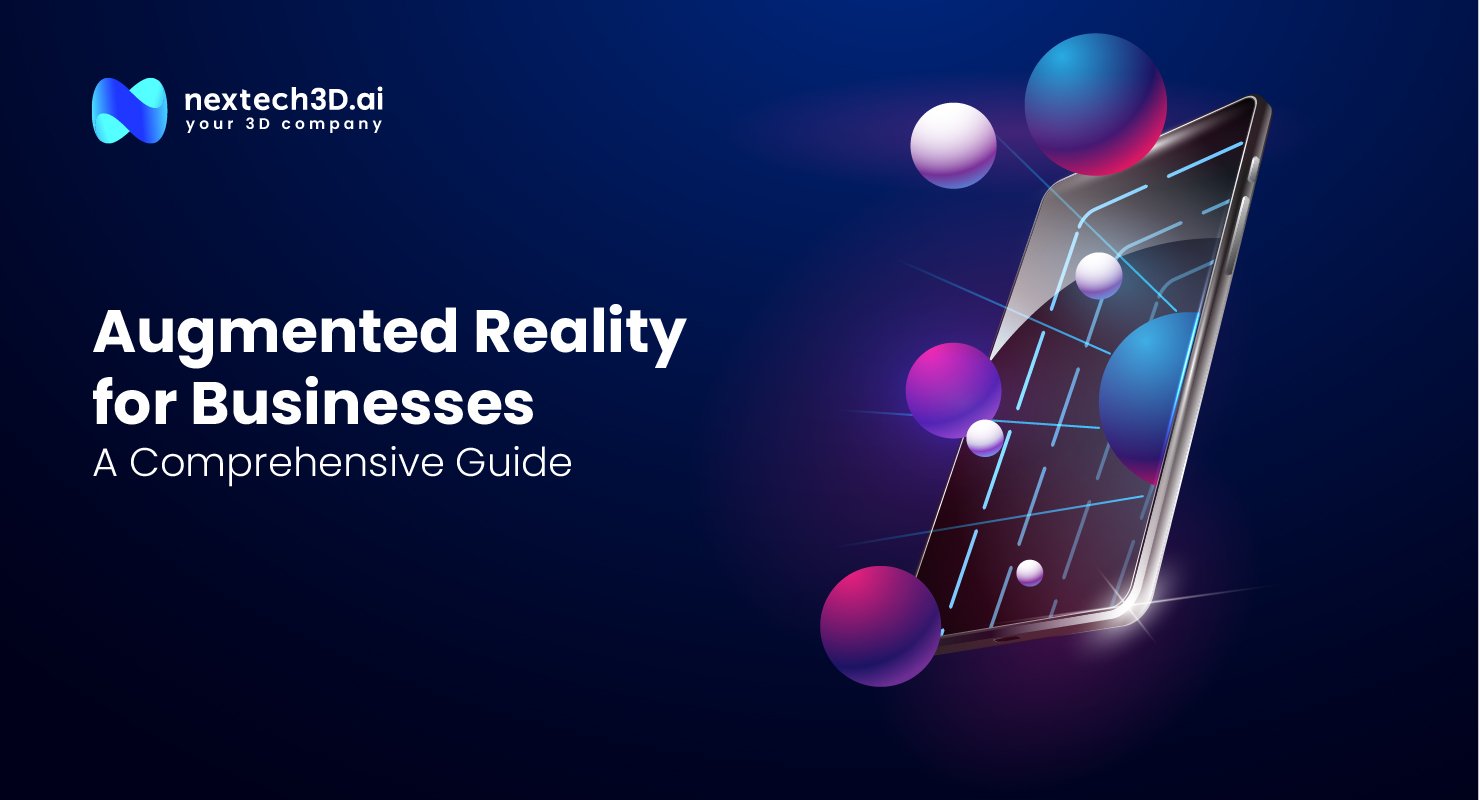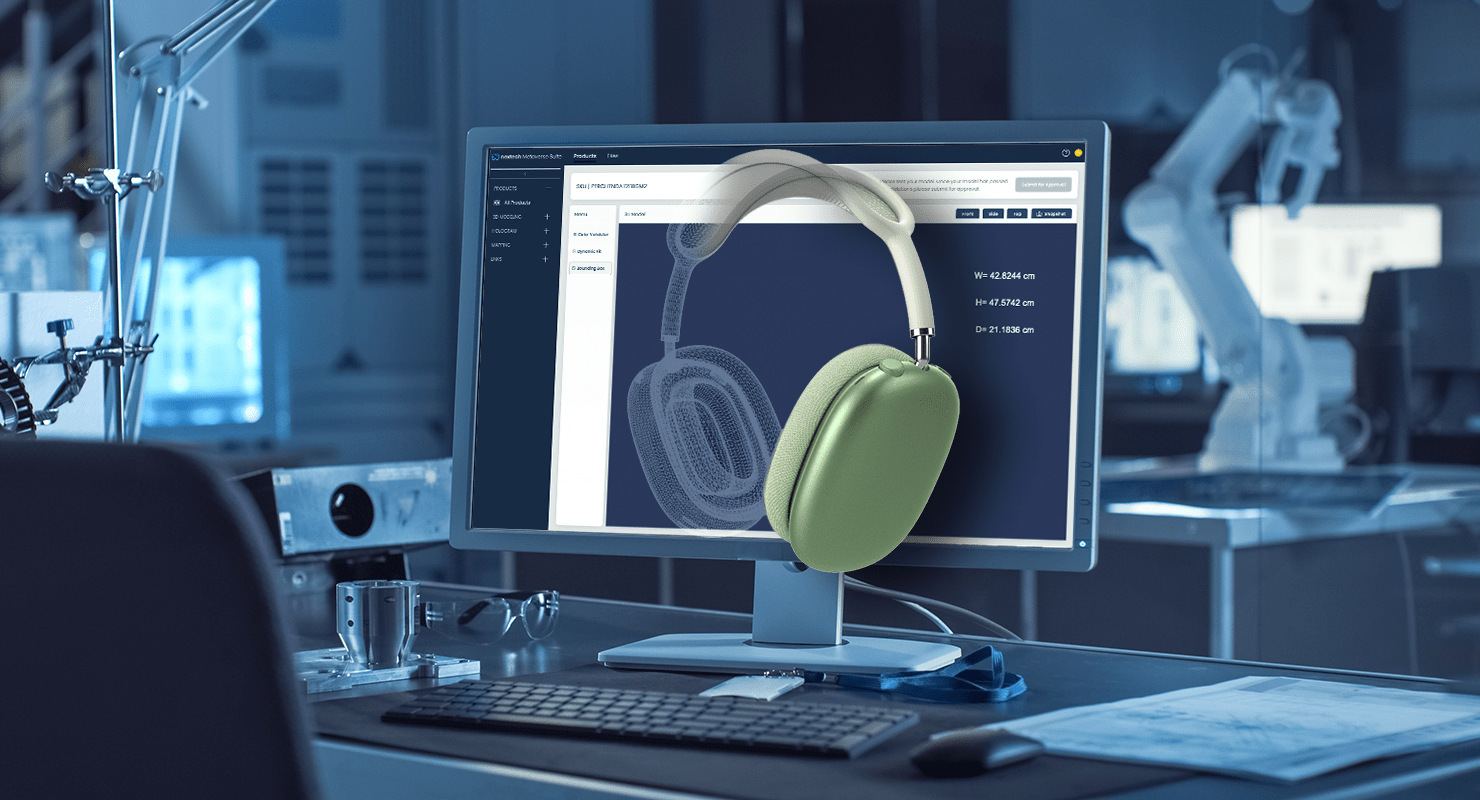Augmented reality (AR) has emerged as a transformative tool in the rapidly evolving technology landscape. AR in business isn't merely a buzzword; it's a dynamic and innovative approach with boundless potential. In this article, we will look into the different dimensions of augmented reality for business, explore its applications, and understand how it can revolutionize various industries.
Understanding AR Technology in Business
Augmented reality uses technology to enhance real-world objects with artificial, digital elements. In simpler terms, whenever you use software or a device to introduce new visual, auditory, or sensory experiences to what you're currently observing, you're engaging with AR. While AR is often associated with smartphone apps that overlay digital elements onto your surroundings, its applications are much broader.
A typical example of AR is shopping for glasses online. When you "try on" glasses virtually, you don't physically put on new frames like in a traditional store. Instead, you take a photo of the frames and superimpose them over your face to estimate how you'd look with the glasses on. This virtual try-on experience offers an immersive and personalized shopping journey, allowing you to confidently select the glasses of your choice.
How AR Impacts Customer Journey
Intrigue
One of augmented reality’s most essential features is its ability to create fresh experiences and keep potential customers on their toes with intriguing entertainment. It helps businesses differentiate themselves from the competition and improve sales. AR has been instrumental in strengthening the network ties between brands and their potential customers, from fun theme-based online parties to formal virtual gatherings.
Inform
Thanks to its interactive and immersive nature, AR serves as an effective channel for disseminating information and content to customers. AR aids customers by simplifying learning, problem-solving, and decision-making, empowering users to gain a deeper understanding of complex products and systems. It can also offer directions or assist customers in navigating spaces. Lastly, AR can provide additional information or highlight features within the physical environment.
Inspect
Product assessment and the ensuing decision-making about product purchases have been made more accurate with the help of AR. AR-generated product showcasing leads to reduced errors, reduced returns, and increased satisfaction. By comparing and evaluating different products using AR, customers find much more clarity regarding their purchase choice.
Benefits of Augmented Reality for Business
Enhanced Customer Engagement: Augmented reality creates immersive and interactive customer experiences. Businesses utilizing AR applications can captivate their audience with engaging content, bridging the gap between the physical and digital realms. This unique approach enhances customer engagement, drawing them into a brand's story in ways previously unimaginable. For example, imagine a customer visualizing how the furniture fits into their home before making a purchase – that's the power of AR in business. It enables users to see how that new sofa, table, or lamp would look and fit within their home environment.
Improved Training and Onboarding
Augmented reality technology is revolutionizing employee training and onboarding processes. Hands-on, AR-guided experiences are replacing traditional training manuals and videos. Employees can learn complex procedures, use specialized equipment, or even troubleshoot issues in real time, making training more efficient and effective. Augmented reality solutions are elevating the learning curve in various sectors, from manufacturing to healthcare.
Increased Efficiency in Operations
Businesses that leverage augmented reality technology benefit from streamlined operations. Whether it's optimizing supply chain management, improving logistics, or enhancing maintenance and repair processes, AR has a vital role. With augmented reality, employees can access real-time critical data, improving decision-making and productivity. This efficiency translates into cost savings and a competitive edge in the market.
Marketing and Sales Advantages
Augmented reality in marketing and sales is growing rapidly. Businesses are adopting AR to create interactive and personalized experiences for customers. Imagine a potential homebuyer taking a virtual tour of a property using an augmented reality platform or a cosmetics company allowing customers to try on makeup virtually. These applications not only drive sales but also enhance brand loyalty.
Ease of Product Development
Product development has entered a new era with the integration of augmented reality. Companies harness this technology to offer potential buyers immersive product demonstrations, allowing them to see and interact with products as if they were physically present. By providing a deeper level of engagement and comprehension, augmented reality solutions bridge the gap between online shopping and in-store experiences, ultimately empowering consumers to make more informed purchase decisions.
Boosting Brand Awareness
By seamlessly blending the digital and physical worlds, companies can leave a lasting imprint in the minds of their customers. These immersive encounters drive brand recognition and foster customer loyalty and valuable feedback. AR empowers businesses to stand out, make a meaningful impact, and connect with their audience on a deeper level, ultimately fortifying their position in the market and solidifying relationships with their customer base.
To read about “The Significance of Indoor Navigation for Accessibility,” click here.
Use Cases of Augmented Reality in Business
Retail
The retail industry is one of the primary beneficiaries of augmented reality applications. AR transforms the shopping experience, allowing customers to visualize products in their natural environment before purchasing. Home decor retailers can give customers a virtual view of how furniture and decor items will look in their homes. For instance, Wayfair employs augmented reality to show buyers how furniture will look in their homes. In the fashion industry, AR enables virtual try-ons, enhancing the online shopping experience.
Real Estate
Augmented reality is operating well within the domain of real estate. Offering innovative ways to showcase properties streamlines the buying and renting process and enhances the overall customer experience. AR enables virtual property tours, property visualization, interactive home staging, neighborhood information, and augmented marketing materials, improving property management and promoting more engaging showings. As a result, AR makes property transactions more efficient, informed, and engaging for buyers and sellers.
Healthcare
AR has revolutionized healthcare app development, offering a myriad of benefits. It enhances diagnosis by enabling patients and healthcare professionals to understand symptoms better, leading to more effective and efficient care. For instance, tools like AccuVein help locate veins, reducing procedure time and improving patient satisfaction. AR has also streamlined surgeries, providing real-time access to vital patient data for precise procedures. It allows surgeons to overlay patient anatomy on the body, ensuring higher success rates and shorter recovery times. Moreover, AR transforms medical training, immersing students in real-life scenarios to assess their knowledge, problem-solving skills, and emotional resilience in patient care.
Manufacturing
Augmented reality platforms present a significant opportunity for manufacturing facilities to enhance their processes and workflows, with the benefit of cost-effectiveness compared to complex hardware investments. AR's convenience in information exchange, free from physical restrictions like cables and devices, is a notable advantage. It can streamline onboarding, allowing new employees to access interactive guidance and instructions, improving safety, and reducing ramp-up time. Furthermore, AR overlays in factories provide real-time insights into equipment and infrastructure performance, enhancing operational information accessibility.
Design and Modeling
Augmented Reality has carved a niche in design and modeling, transforming how we conceptualize, create, and experience various projects. AR has become an indispensable architectural tool, allowing architects to visualize and modify building designs in real-time. It not only enhances the precision of their work but also encourages more creative thinking. Moreover, industrial design has embraced AR to streamline product development. Designers can interact with 3D models, manipulate them, and evaluate their ergonomic and functional aspects. This hands-on approach to design helps rapidly prototype new products, reducing both time and costs.
Social Media
AR in social media goes beyond traditional posts and selfies, transforming how we share and consume content. One of the most notable applications of AR in social media is the proliferation of AR filters and lenses. Platforms like Snapchat, Instagram, and Facebook have integrated AR features that allow users to add quirky masks, animations, and digital effects to their photos and videos. Social media platforms have also begun experimenting with location-based AR features. For instance, users can unlock special filters or experiences when they visit specific locations or landmarks, making sharing travel experiences more exciting and interactive.
Event Management
AR technology has the potential to transform events into immersive, interactive, and highly engaging experiences. One of the practical applications of AR in event management is aiding attendees in navigating large event venues. AR-based maps and navigation systems can guide participants to specific booths, stages, restrooms, or food areas, ensuring a seamless and stress-free experience. AR can be used to create interactive promotional materials for events. Attendees can revisit their AR-generated memories, access post-event content, or engage in follow-up activities, such as accessing presentations or downloading event materials.
To learn more about the benefits of digital wayfinding, check out our blog: “What is Digital Wayfinding: Top 10 Benefits”.
Challenges in Implementing AR Solutions
A robust technical infrastructure is a significant consideration for implementing AR solutions. Traditional AR development is often complex, requiring coding expertise and expensive hardware. AR relies on powerful devices, high-speed internet connections, and sometimes specialized equipment. However, Nextech3D.ai provides an intuitive and hassle-free approach to creating AR experiences. Its suite of AI-powered products requires no hardware or code and is easy to scale, making it a compelling choice for businesses seeking to harness AR’s transformative potential.
In a nutshell, Augmented reality for businesses is a game-changer, offering enhanced customer engagement, improved training, streamlined operations, and new marketing and sales opportunities. AR applications are redefining how industries operate, from retail to healthcare, manufacturing to education. In a world where technology evolves quickly, businesses must use augmented reality to stay ahead.
About Nextech3D.ai
Nextech3D.ai is a diversified augmented reality AI technology company that leverages proprietary AI to create 3D experiences for the $5.5 trillion e-commerce industry. Its primary businesses are creating 3D WebAR photorealistic models for Amazon and many other online retailers. The company develops or acquires what it believes is disruptive technology and is committed to empowering businesses to evolve and become part of the new 3D and AR ecosystem.
Nextech3D.ai is the leading solution provider for AI-based 3D and AR technology. It is the parent company of cutting-edge brands - Toggle3D.ai, ARitize3D, ARway.ai, and Map D.








